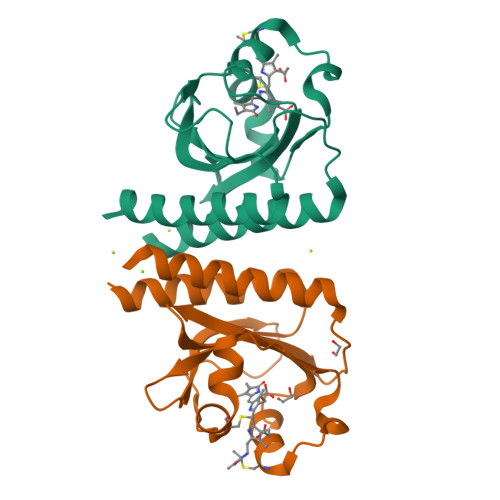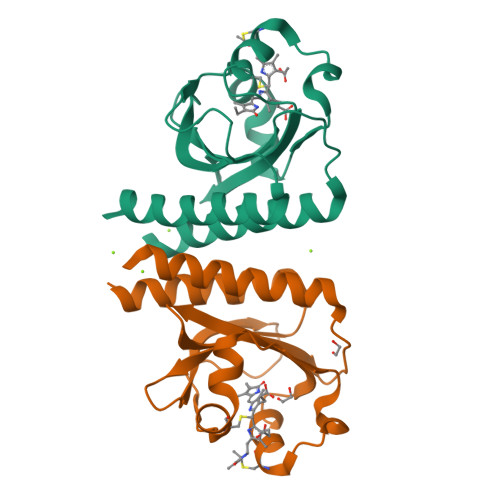Photoreversible interconversion of a phytochrome photosensory module in the crystalline state.
Burgie, E.S., Clinger, J.A., Miller, M.D., Brewster, A.S., Aller, P., Butryn, A., Fuller, F.D., Gul, S., Young, I.D., Pham, C.C., Kim, I.S., Bhowmick, A., O'Riordan, L.J., Sutherlin, K.D., Heinemann, J.V., Batyuk, A., Alonso-Mori, R., Hunter, M.S., Koglin, J.E., Yano, J., Yachandra, V.K., Sauter, N.K., Cohen, A.E., Kern, J., Orville, A.M., Phillips Jr., G.N., Vierstra, R.D.(2020) Proc Natl Acad Sci U S A 117: 300-307
- PubMed: 31852825
- DOI: https://doi.org/10.1073/pnas.1912041116
- Primary Citation of Related Structures:
6P58, 6PRU, 6PRY, 6UPP - PubMed Abstract:
A major barrier to defining the structural intermediates that arise during the reversible photointerconversion of phytochromes between their biologically inactive and active states has been the lack of crystals that faithfully undergo this transition within the crystal lattice. Here, we describe a crystalline form of the cyclic GMP phosphodiesterases/adenylyl cyclase/FhlA (GAF) domain from the cyanobacteriochrome PixJ in Thermosynechococcus elongatus assembled with phycocyanobilin that permits reversible photoconversion between the blue light-absorbing Pb and green light-absorbing Pg states, as well as thermal reversion of Pg back to Pb. The X-ray crystallographic structure of Pb matches previous models, including autocatalytic conversion of phycocyanobilin to phycoviolobilin upon binding and its tandem thioether linkage to the GAF domain. Cryocrystallography at 150 K, which compared diffraction data from a single crystal as Pb or after irradiation with blue light, detected photoconversion product(s) based on F obs - F obs difference maps that were consistent with rotation of the bonds connecting pyrrole rings C and D. Further spectroscopic analyses showed that phycoviolobilin is susceptible to X-ray radiation damage, especially as Pg, during single-crystal X-ray diffraction analyses, which could complicate fine mapping of the various intermediate states. Fortunately, we found that PixJ crystals are amenable to serial femtosecond crystallography (SFX) analyses using X-ray free-electron lasers (XFELs). As proof of principle, we solved by room temperature SFX the GAF domain structure of Pb to 1.55-Å resolution, which was strongly congruent with synchrotron-based models. Analysis of these crystals by SFX should now enable structural characterization of the early events that drive phytochrome photoconversion.
Organizational Affiliation:
Department of Biology, Washington University in St. Louis, St. Louis, MO 63130.




















